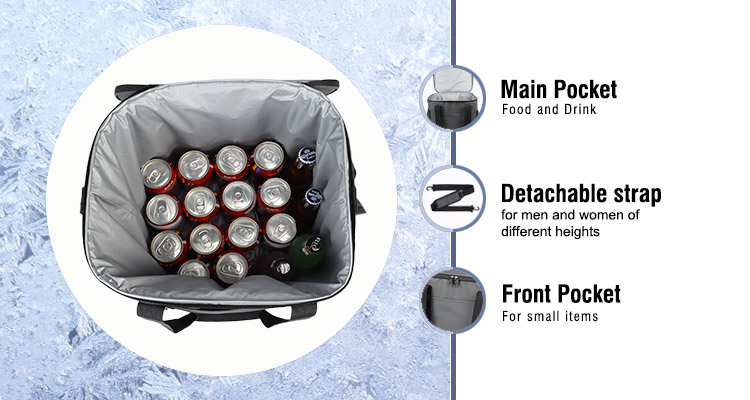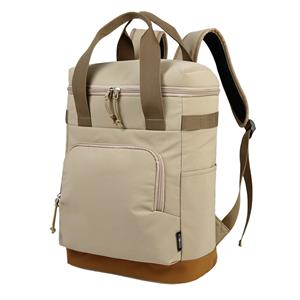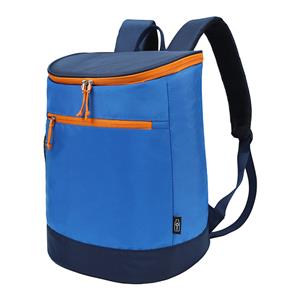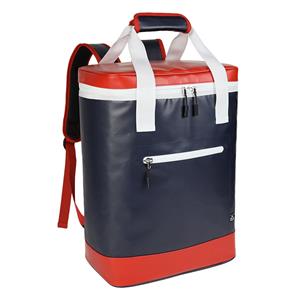Outdoor Coolers: Building a Sustainable Future
As the outdoor community becomes increasingly aware of its environmental impact, the role of outdoor coolers in building a sustainable future takes center stage. These coolers are not merely tools for preserving food and drinks; they are potential agents of change in how we approach outdoor recreation and resource consumption. Through material innovation, energy efficiency, and lifecycle management, outdoor coolers are evolving to minimize their ecological footprint while maximizing their utility for generations to come.

The journey toward sustainable outdoor coolers begins with the selection of eco - friendly materials. Traditional coolers, often made from petroleum - based plastics and insulation foams that release harmful chemicals during production and decomposition, are giving way to more environmentally benign alternatives. Recycled plastics are now commonly used for cooler exteriors and components, reducing the demand for virgin materials and diverting waste from landfills. Some manufacturers have developed insulation using plant - based materials, such as rice hulls, wheat straw, or even cotton, which are renewable resources with lower carbon impacts compared to synthetic foams.
The production processes themselves are undergoing a green transformation. Cooler manufacturers are adopting manufacturing techniques that consume less energy and generate fewer emissions. For example, some companies have switched to water - based adhesives instead of solvent - based ones, reducing volatile organic compound (VOC) emissions that contribute to air pollution. Others are implementing closed - loop water systems in their facilities to minimize water waste. These changes, while seemingly small, collectively represent a significant shift toward more sustainable production practices.
Energy efficiency in cooler operation is another critical area of focus. Solar - powered coolers are at the forefront of this movement, harnessing renewable energy to actively maintain lower temperatures without reliance on traditional power sources. These coolers incorporate photovoltaic cells that convert sunlight into electricity, which powers cooling elements or charges batteries that run the cooling system during low - light conditions. While the initial cost of solar - powered coolers may be higher, their long - term benefits in terms of reduced environmental impact and operational costs (such as ice purchase and transportation) make them an attractive option for eco - conscious consumers.
The concept of product lifecycle is being reimagined for outdoor coolers. Many manufacturers now design coolers with disassembly and recyclability in mind. This means that individual components, such as handles, latches, and insulation layers, can be easily separated and recycled at the end of the cooler's life. Some brands offer take - back programs where consumers can return old coolers, which are then either refurbished for secondary markets or properly disassembled and recycled. This closed - loop approach ensures that materials remain in use for as long as possible and minimizes waste sent to landfills.
Consumer education is a vital component of building a sustainable future for outdoor coolers. As more eco - friendly options become available, it's essential that consumers understand how to identify genuinely sustainable products amidst a sea of green - washed claims. Certifications from third - party organizations, such as those verifying recycled content or compliance with environmental standards like ISO 14001, provide consumers with trustworthy information. Additionally, many cooler manufacturers are becoming transparent about their sustainability initiatives, sharing detailed information about their materials, production processes, and environmental impact on their websites and product packaging.
The cultural shift toward sustainability within the outdoor community is perhaps the most powerful driver of change. Outdoor enthusiasts, who have a deep appreciation for nature, are increasingly making purchasing decisions based on a product's environmental credentials. This shift creates market demand for sustainable coolers, incentivizing manufacturers to innovate and prioritize eco - friendly practices. Social media and outdoor forums are filled with discussions about sustainable gear choices, creating a community - driven momentum that pushes the entire industry toward greater environmental responsibility.
Innovations in insulation technology are contributing to sustainability goals by reducing the overall resource consumption associated with cooling. Advanced insulation materials like vacuum - insulated panels and aerogels not only provide superior thermal performance but also require less material to achieve the same insulation effect as traditional foams. This reduction in material use translates to lower energy consumption during production and less waste at the end of the product's life. Furthermore, the extended temperature - retention capabilities of these materials mean that less ice or cooling elements are needed per trip, reducing the resources consumed in producing and transporting ice.
The water footprint of outdoor coolers is another aspect being addressed through sustainable design. Traditional coolers that rely on ice for cooling require significant amounts of water to produce that ice, especially when used frequently. Coolers with advanced insulation and alternative cooling methods reduce this water dependency. Additionally, some coolers are designed with water - efficient features, such as built - in water filtration systems that allow users to refill water bottles directly from natural sources, reducing the need for single - use bottled water.
For outdoor businesses and rental companies, the transition to sustainable coolers offers both environmental and economic benefits. By investing in coolers with longer lifespans and lower environmental impacts, these businesses can reduce their operational costs while appealing to an increasingly eco - conscious customer base. The positive brand association with sustainability can enhance customer loyalty and market competitiveness in the outdoor industry.
The path to a sustainable future for outdoor coolers is not without challenges. Balancing performance, cost, and environmental impact requires continuous research and innovation. However, the progress made thus far demonstrates that sustainability and functionality can coexist. As consumers, manufacturers, and the outdoor community at large continue to prioritize environmental stewardship, outdoor coolers will evolve into products that not only preserve our food and drinks but also help preserve the natural world we love to explore.
In embracing sustainable outdoor coolers, we acknowledge that our outdoor experiences are inextricably linked to the health of the environment. Each choice we make as consumers and each innovation pursued by manufacturers contributes to a legacy of responsible outdoor recreation. The coolers we use today will shape the experiences of tomorrow's adventurers, offering them the same opportunities to find solace, excitement, and connection in the natural world that we cherish.





